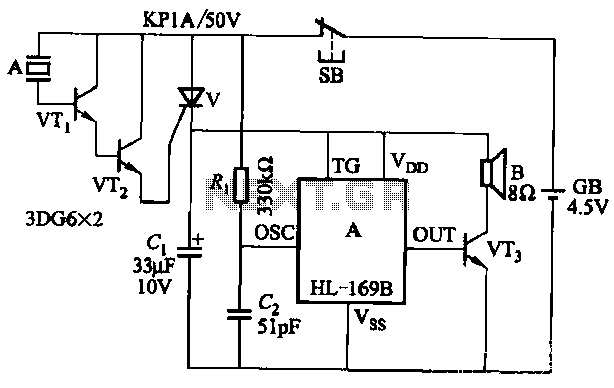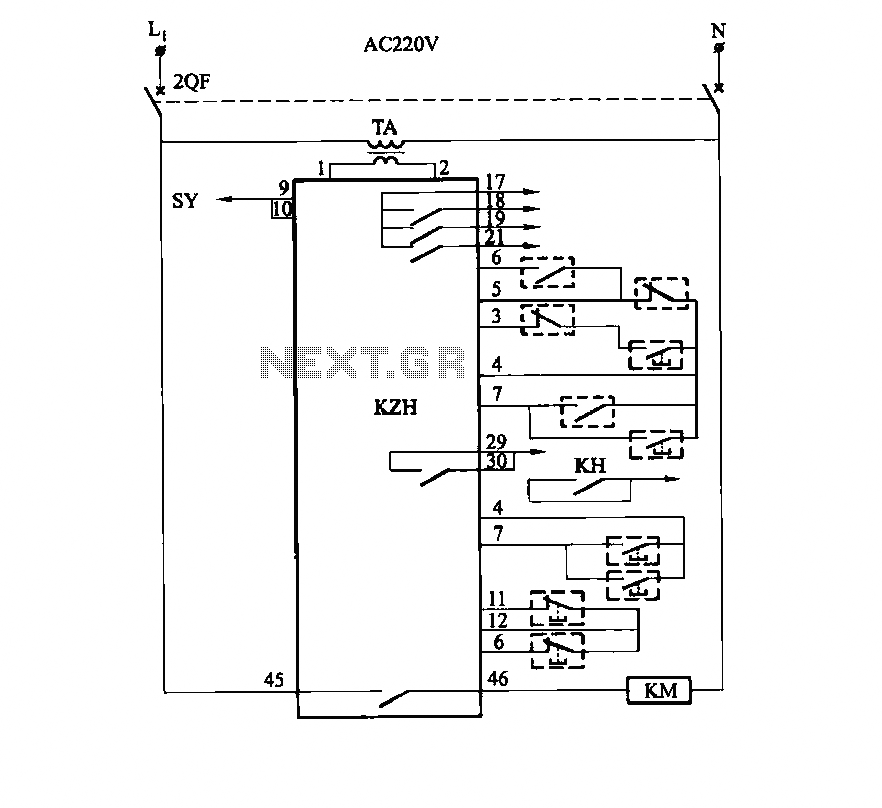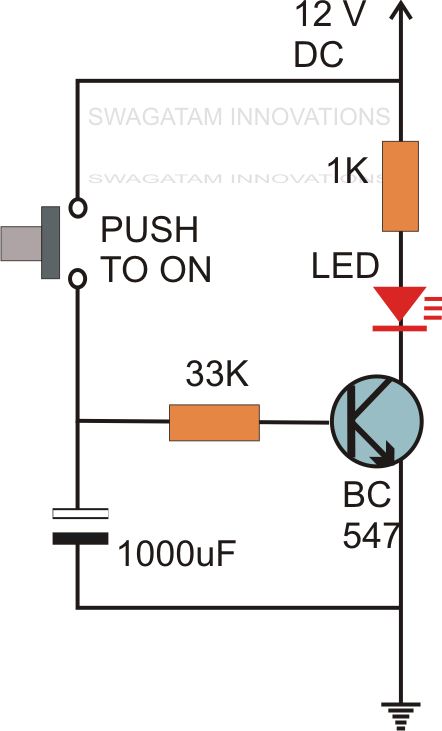
Precision Dark-Activated Switch With Hysteresis Circuit

A GdS cell serves as one leg of a bridge circuit. Potentiometer R6 in another leg establishes the trip point. Potentiometer R5 allows for hysteresis adjustment to prevent chattering or hunting of the relay. The light level must increase significantly before the 2N3904 transistor turns off, resulting in the deactivation of the circuit.
The described circuit utilizes a GdS (Gallium Sulfide) light sensor, which is sensitive to changes in light levels. In this configuration, the GdS cell is integrated into a bridge circuit, which typically consists of four resistive elements arranged in a diamond shape. The bridge circuit is designed to measure the imbalance created by changes in light intensity, which affects the resistance of the GdS cell. This imbalance generates a voltage difference across the bridge, which can be monitored.
Potentiometer R6, positioned in one leg of the bridge, is used to set a specific trip point. This trip point determines the threshold at which the circuit responds to changes in light intensity. By adjusting R6, the user can define the sensitivity of the circuit, allowing it to activate or deactivate based on the desired light level.
Potentiometer R5 is incorporated into the circuit to provide hysteresis. Hysteresis is a critical feature that helps stabilize the operation of the relay by preventing rapid on-off cycling, often referred to as chattering or hunting. This is achieved by introducing a delay in the turn-off point of the circuit, ensuring that the light level must increase significantly beyond the trip point before the transistor 2N3904 turns off. This design consideration is crucial in applications where stable operation is necessary, such as in lighting control systems or automatic light sensors.
The 2N3904 transistor functions as a switching element in this circuit. When the light level falls below the defined trip point, the transistor is activated, allowing current to flow through the relay, which in turn can control larger loads. Conversely, when the light level rises sufficiently, the transistor turns off, deactivating the relay and stopping the current flow. This behavior ensures that the circuit responds effectively to changes in ambient light conditions while maintaining reliable operation. A GdS cell is one leg of a bridge circuit. Potentiometer R6 iri another leg sets the trip point. Potentiometer R5 provides hysteresis adjustment to prevent chattering or hunting of the relay. The light level has to increase noticeably before the 2N3904 turns off and the circuit deactivates.
The described circuit utilizes a GdS (Gallium Sulfide) light sensor, which is sensitive to changes in light levels. In this configuration, the GdS cell is integrated into a bridge circuit, which typically consists of four resistive elements arranged in a diamond shape. The bridge circuit is designed to measure the imbalance created by changes in light intensity, which affects the resistance of the GdS cell. This imbalance generates a voltage difference across the bridge, which can be monitored.
Potentiometer R6, positioned in one leg of the bridge, is used to set a specific trip point. This trip point determines the threshold at which the circuit responds to changes in light intensity. By adjusting R6, the user can define the sensitivity of the circuit, allowing it to activate or deactivate based on the desired light level.
Potentiometer R5 is incorporated into the circuit to provide hysteresis. Hysteresis is a critical feature that helps stabilize the operation of the relay by preventing rapid on-off cycling, often referred to as chattering or hunting. This is achieved by introducing a delay in the turn-off point of the circuit, ensuring that the light level must increase significantly beyond the trip point before the transistor 2N3904 turns off. This design consideration is crucial in applications where stable operation is necessary, such as in lighting control systems or automatic light sensors.
The 2N3904 transistor functions as a switching element in this circuit. When the light level falls below the defined trip point, the transistor is activated, allowing current to flow through the relay, which in turn can control larger loads. Conversely, when the light level rises sufficiently, the transistor turns off, deactivating the relay and stopping the current flow. This behavior ensures that the circuit responds effectively to changes in ambient light conditions while maintaining reliable operation. A GdS cell is one leg of a bridge circuit. Potentiometer R6 iri another leg sets the trip point. Potentiometer R5 provides hysteresis adjustment to prevent chattering or hunting of the relay. The light level has to increase noticeably before the 2N3904 turns off and the circuit deactivates.





